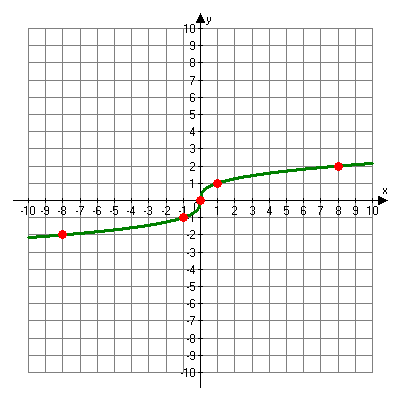The Square Root and Cube Root Parent Functions
In the warm-up you reviewed how the values of "a", "h", and "k" affected the parent function y = x2. There are two more parent functions that you need to go through.
The first is the square root function. Make a table and fill in the x- and y-values so that you can graph the function ![]() .
.
Why doesn’t this table include negative values of x? Remember that when you have a negative inside a square root, your solution will include an imaginary number. You are only interested in real solutions for this graph.
Plot the points on the coordinate plane and draw the graph of ![]() .
.

![]()
You can create a similar table for ![]() . One important thing to remember is that cube root functions can have a negative as a radicand. For example,
. One important thing to remember is that cube root functions can have a negative as a radicand. For example,  since
since ![]() . As a general rule all odd roots can have negative radicands while all even roots will have imaginary answers if the radicand is negative.
. As a general rule all odd roots can have negative radicands while all even roots will have imaginary answers if the radicand is negative.
Plot the points on the coordinate plane and draw the graph of ![]() .
.

![]()